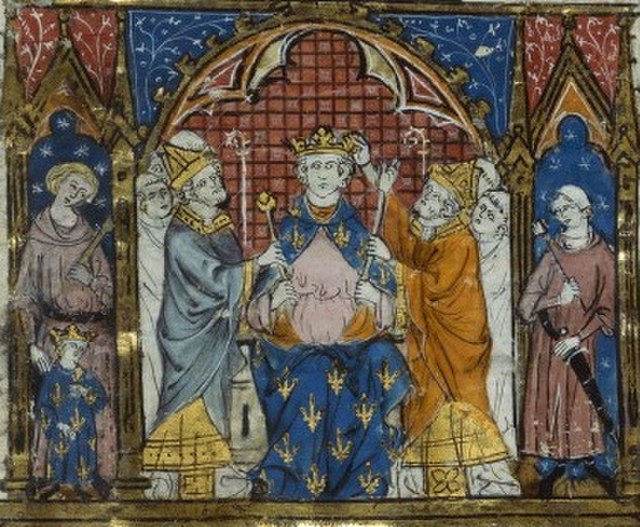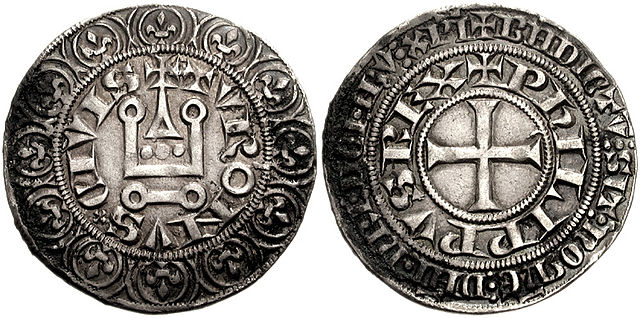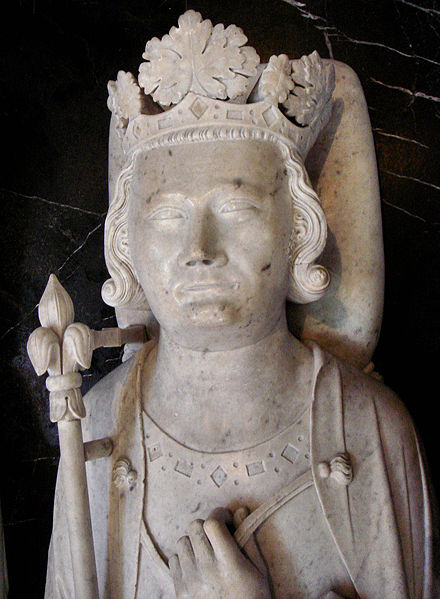Philip V, known as the Tall, was King of France and Navarre from 1316 to 1322. Philip engaged in a series of domestic reforms intended to improve the management of the kingdom. These reforms included the creation of an independent Court of Finances, the standardization of weights and measures, and the establishment of a single currency.
Contemporary miniature depicting the coronation of Philip V, from the Grandes Chroniques de France
Philip engineered a hasty coronation after the death of his nephew, the young John I, to build support for his bid for the French throne in 1316–17.
Philip took steps to reform the French currency during the course of his reign, including these silver Tournois coins.
Philip pursued a successful diplomatic and dynastic solution to the long running tensions with Flanders.
Philip IV, called Philip the Fair, was King of France from 1285 to 1314. By virtue of his marriage with Joan I of Navarre, he was also King of Navarre as Philip I from 1284 to 1305, as well as Count of Champagne. Although Philip was known to be handsome, hence the epithet le Bel, his rigid, autocratic, imposing, and inflexible personality gained him other nicknames, such as the Iron King. His fierce opponent Bernard Saisset, bishop of Pamiers, said of him: "He is neither man nor beast. He is a statue."
Detail from a 1315 miniature
Gisant of Philip the Fair in the Basilica of Saint-Denis
Homage of King Edward I (kneeling) to Philip IV (seated). As Duke of Aquitaine, Edward was a vassal to the French king. Illumination made in the 15th century by Jean Fouquet.
Masse d'or (7,04 g) during Philip the Fair's reign








